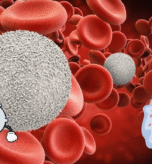The relationship between beauty and spirituality has been a topic of interest across various cultures, philosophies, and religions. Beauty, in its myriad forms, has long been considered a gateway to the divine, a reflection of the transcendent, and a means of connecting with something greater than ourselves. This article explores the intricate connection between beauty and spirituality, examining how beauty can be a catalyst for spiritual growth, self-discovery, and a deeper understanding of the universe.
Beauty as a Reflection of the Divine
Many spiritual traditions view beauty as a manifestation of the divine. In Platonic philosophy, beauty is seen as a reflection of the eternal and unchanging realm of Forms, where the essence of Beauty itself resides. Similarly, in various religious traditions, beauty is considered a reflection of God’s glory, creativity, and love. The natural world, with its breathtaking landscapes, intricate patterns, and vibrant colors, is often seen as a testament to the divine’s majesty and artistry.
The Power of Art and Symbolism
Art, in its various forms, has long been a means of expressing and connecting with the divine. From the intricate mandalas of Tibetan Buddhism to the soaring cathedrals of Gothic architecture, art has been used to convey spiritual truths, evoke emotions, and create a sense of awe and wonder. Symbolism, too, plays a crucial role in spirituality, with various symbols and icons serving as gateways to higher states of consciousness and deeper understanding.
The Role of Beauty in Spiritual Growth
Beauty can be a powerful catalyst for spiritual growth, as it has the ability to:
- Evoke emotions: Beauty can evoke feelings of awe, wonder, and gratitude, which can lead to a deeper sense of connection with the universe and the divine.
- Inspire contemplation: Beauty can inspire us to pause, reflect, and contemplate the mysteries of existence, leading to greater self-awareness and understanding.
- Transcend the mundane: Beauty can transport us beyond the mundane and ordinary, allowing us to experience the world in a new and profound way.
The Connection Between Beauty and Inner Transformation
Beauty can also be a means of inner transformation, as it has the power to:
- Awaken the soul: Beauty can awaken the soul to new possibilities, inspiring us to explore our own creativity, potential, and purpose.
- Cultivate compassion: Beauty can cultivate compassion and empathy, as we connect with the experiences and emotions of others through art, music, and other forms of creative expression.
- Foster mindfulness: Beauty can encourage mindfulness, as we become fully present and engaged in the experience of beauty, letting go of distractions and cultivating a deeper sense of awareness.
The Interplay Between Inner and Outer Beauty
The connection between beauty and spirituality also highlights the interplay between inner and outer beauty. While outer beauty can be a reflection of the divine, inner beauty – characterized by qualities such as kindness, compassion, and wisdom – is often seen as a more profound and lasting form of beauty. As we cultivate inner beauty, we may find that our outer experiences of beauty are transformed, and we see the world in a new and more profound way.
Conclusion
The connection between beauty and spirituality is complex and multifaceted. Beauty can be a reflection of the divine, a catalyst for spiritual growth, and a means of inner transformation. As we explore the relationship between beauty and spirituality, we may find that our understanding of both is deepened, and our experience of the world is transformed. By embracing the beauty that surrounds us, and cultivating inner beauty, we may discover new pathways to spiritual growth, self-discovery, and a deeper understanding of the universe.



